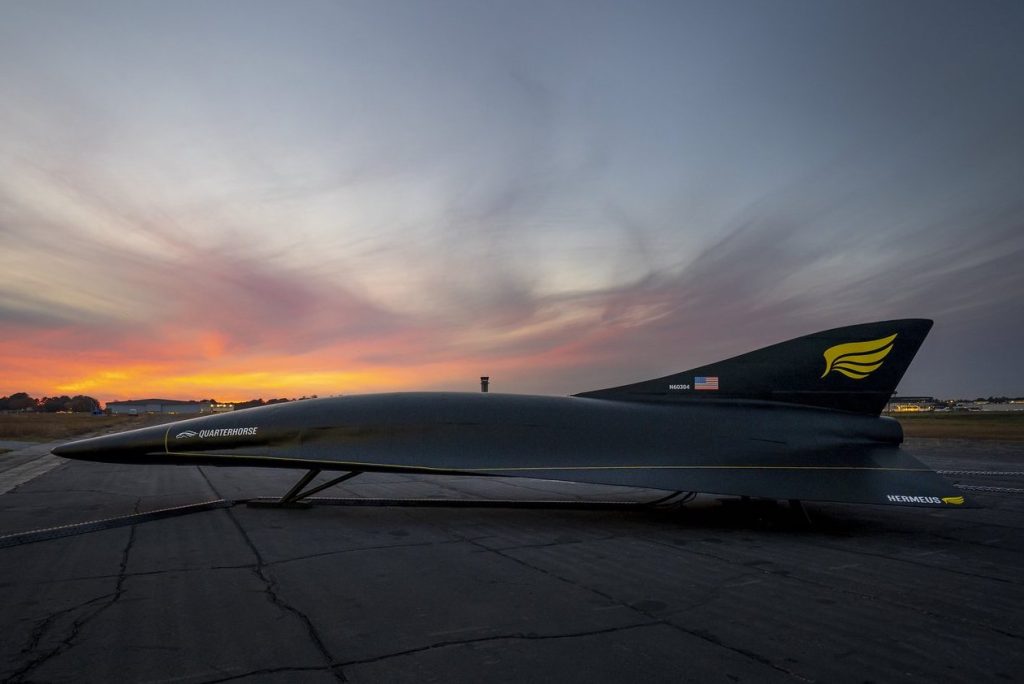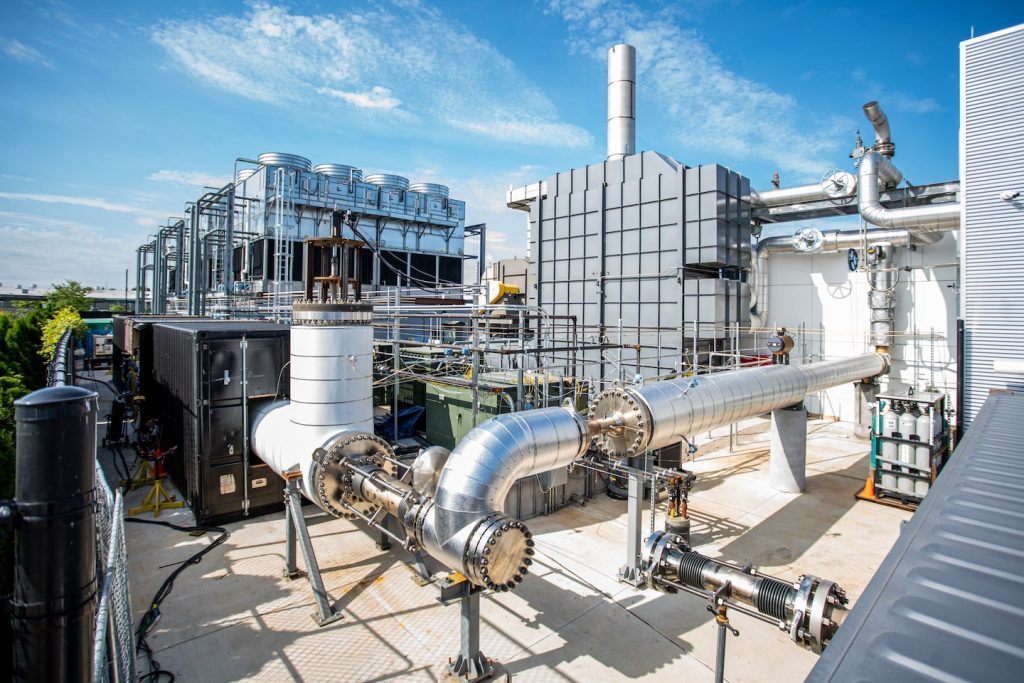The 3D Printing Industry Awards 2022 shortlists are now available for voting. Who will win the 2022 3DPI Awards? Have your say by casting your vote now.
US aerospace start-up Hermeus has passed a new hypersonic testing landmark with the partially-3D printed Chimera engine of its upcoming Quarterhorse aircraft.
During these tests, the Chimera proved capable of repeatedly transitioning from a turbojet mode designed to launch the autonomous jet, into a high-Mach speed ramjet mode. Hermeus has heralded its testing success as “one of the most important technological feats” in making hypersonic flight a reality, and “de-risking” it for commercial and defense applications.
Hermeus’ hypersonic flight ambitions
Founded just four years ago, Hermeus is on a mission to radically accelerate air travel by creating the world’s fastest aircraft. Building on the aerospace experience of the firm’s leadership team and working with partners at NASA and the US Air Force, it aims to develop a series of autonomous aircraft, as well as a Mach-5 capable commercial jet.
Of these planes, Hermeus’ first will be the Quarterhorse, a remotely-piloted hypersonic aircraft that like its namesake, the American Quarter Horse, is being designed to excel in ‘sprints’ over short distances. With a cruising altitude of 95,000 feet, and a hypersonic Mach-5 top speed, its developers say that “by the end of its test campaign, the Quarterhorse will be the fastest aircraft in the world.”
Having tested the aircraft’s engine, Hermeus remains on-track to meet its product roadmap. Moving forwards, the firm intends to give the Quarterhorse its first flight test in 2023, before developing a larger autonomous craft for testing in 2025 and eventually using its learnings to build a passenger jet, due to enter service in 2029.
When ready, Hermeus claims its commercial aircraft will be capable of traveling at “more than twice the speed” of the supersonic Concorde, in a way that will allow passengers to get from New York to London in just 90 minutes.

The engine behind the Quarterhorse
At the heart of the Quarterhorse is the Chimera, a turbojet-ramjet hybrid known as a turbine-based combined cycle (TBCC) engine. Composed of an afterburner, ramjet, turbojet engine, precooler and rear inlet, this engine is made from a mixture of technologies old and new. Last year, for instance, Hermeus acquired six GE J85-21 turbojet engines that it has pledged to build the Chimera around.
These have been integrated with modern technologies like additive manufacturing, and around 15% of the overall propulsion system is 3D printed, something that has facilitated its rapid development. In essence, Hermeus’ engine is vital to the success of its hypersonic flight plans, as it’s set to allow the Quarterhorse to take off from a normal runway, before accelerating to high-Mach speeds.
In practice, the Chimera is expected to make this possible by ‘transitioning’ from turbojet to ramjet mode. While the engine does so at about Mach-3, it also features a pre-cooler that cools the air coming into the turbojet prior to changing mode, in a way that should enable Hermeus to get every last drop of performance out of it, before this happens.
Having now tested the Chimera at the Notre Dame Turbomachinery Laboratory, Hermeus says vertical integration is behind its success so far. The company claims that in-house manufacturing has allowed for a tight feedback loop between engineers and technicians, facilitating rapid iteration, and it has also managed to build the hypersonic engine on a much tighter budget than industry rivals.
“This achievement is a major technical milestone for Hermeus,” said AJ Piplica, CEO of Hermeus. “But more than that, it’s a proof point that demonstrates how our small team can rapidly design, build, and test hardware with budgets significantly smaller than industry peers.”

Targeting hypersonic flight with AM
As the race to build hypersonic flight-capable civilian and military aircraft hots up, 3D printing has begun to play a pivotal role in their development. Earlier this year, NextFlex awarded $17 million to a project targeting the production of 3D printed hypersonic flight parts, as well as several other initiatives, including those surrounding additive manufactured radio frequency (RF) devices.
Similarly, America Makes awarded Boeing $500,000 in March 2022 to develop distortion-resistant 3D printed hypersonic parts. Working with RPM Innovations and Hexagon, the Project Call-winning project has seen the Boeing-led team iterate upon a new design approach, focused on improving the reliability of components deployed at Mach–5 speed.
In military applications, an Aerojet Rocketdyne scramjet engine featuring 3D printed parts has also been flight tested as part of a US hypersonic missile research project. By 3D printing the engine’s drive system, the firm is said to have been able to construct it using 95% fewer parts than were needed to build its previous iteration.
To stay up to date with the latest 3D printing news, don’t forget to subscribe to the 3D Printing Industry newsletter or follow us on Twitter or liking our page on Facebook.
While you’re here, why not subscribe to our Youtube channel? featuring discussion, debriefs, video shorts and webinar replays.
Are you looking for a job in the additive manufacturing industry? Visit 3D Printing Jobs for a selection of roles in the industry.
Featured image shows Hermeus’ Quarterhorse hypersonic aircraft. Image via Hermeus.



